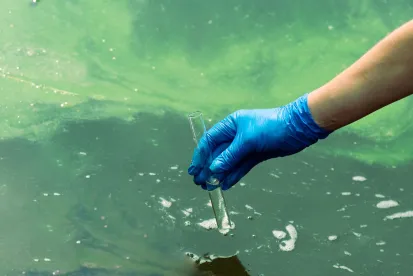On Wednesday, March 8, the Environmental Protection Agency (EPA) released a signed prepublication version of a proposed rule tightening Effluent Limitations Guidelines and Standards (ELGs) for coal-fired steam electric power generating units. EPA also released a prepublication version of a direct final rule extending the deadline for units to elect compliance with less burdensome requirements as long as they cease combusting coal by the end of 2028. Once published in the Federal Register, facilities would have 90 days to elect that relief.
Background
Under the Clean Water Act (CWA), EPA publishes Effluent Limitations Guidelines and Standards (ELGs) that are industry-specific wastewater requirements based on the performance of demonstrated wastewater treatment technologies. These technology-based limits represent the greatest pollutant reductions that are economically achievable for the applicable industry. EPA issued updates for ELGs for the steam electric power generating category in 2015 and in 2020.[1]
The 2020 regulation included flexibility for units that were going to stop combusting coal by the end of 2028 by allowing those units to comply with less stringent requirements. In 2021, EPA identified additional pollutant reductions that can be achieved through available treatment technologies. EPA’s current proposed rulemaking seeks to further tighten ELGs for coal-fired steam electric power generating units.
New Proposal
The proposed rule establishes tougher ELGs for two categories of wastewater (effluent) from existing coal-fired steam electric power generating units: flue gas desulfurization (FGD) wastewater and bottom ash (BA) transport water. The proposal also establishes a new ELG for combustion residual leachate (CRL); a court had previously invalidated the prior ELG for CRL because it failed to reflect “best technology available.” Finally, EPA also is proposing to set on a case-by-case basis ELGs for legacy wastewater in surface impoundments based on “best professional judgement” (BPJ).
EPA is evaluating four regulatory options for coal-fired units to comply with the effluent discharge limitations and standards in the proposed rule. The options include the same technology basis for CRL (chemical precipitation) and legacy wastewater (best professional judgment by the permitting authority) while increasing controls on FGD wastewater and BA transport water. Of the four options, EPA prefers “Option 3.” In Option 3, EPA proposes that the new technology basis to establish limitations to control pollutants for FGD wastewater is chemical precipitation followed by membrane filtration and for BA transport water is dry handling or closed-loop systems. Importantly, the technology bases for both FGD wastewater and BA transport water are zero-emission discharge technologies.
By contrast, the existing ELG regulations set effluent discharge limitations for FGD wastewater based on chemical precipitation and low residence time reduction through biological treatment. Similarly, the existing ELG regulations allowed for BA transport water effluent discharge limitation based on high recycle rate systems that permitted wastewater purges up to ten percent without prior treatment.
The proposal also establishes a new set of definitions for legacy wastewaters present in existing surface impoundments prior to more stringent limitations in a discharge permit going into effect. These definitions include “surface impoundment,” which means “a natural topographic depression, man-made excavation, or diked area that is designed to hold an accumulation of coal combustion residuals and liquids, and the unit treats, stores, or disposes of coal combustion residuals.”[2] EPA stated that it has “always sought to harmonize” this ELG with the Disposal of Coal Combustion Residuals from Electric Utilities final rule (CCR rule).[3] EPA therefore incorporates the definition of “surface impoundments” (and terms therein) from 40 C.F.R. § 257.53 in order to match the definition from the CCR rule. EPA clarifies that “tanks” are not surface impoundments. The proposal also includes new definitions for “surface impoundment decant wastewater,” “surface impoundment dewatering wastewater,” and “surface impoundment dewatering wastewater.” EPA is soliciting comment on whether the agency should develop more stringent discharge standards for the newly defined legacy wastewaters.
EPA proposes to preserve several implementation flexibilities. The proposal still allows exemptions from compliance for units permanently stopping coal combustion by 2028 as established in the 2020 rule. To address the situation that some plants have installed or are installing more advanced treatment technologies to meet the 2015 and 2020 standards, the proposal creates less stringent requirements for “early adopters” that have already complied with either the 2015 or 2020 rule’s requirements and elect to retire by 2032.[4] “Early adopters” under the Proposed Rule are those utilities that aimed to comply with the 2015 and 2020 rules with biological treatment and dry or closed-loop BA handling systems (even where these systems turned out to have a purge) and will have complied with the limitations in those rules by the date of publication of the Proposed Rule.
EPA estimates the proposed rule will cost $200-216 million per year in social costs and result in $1,557-1,290 million per year in monetized benefits depending on the discount rate.
Next Steps
Once published in the Federal Register, EPA will be accepting written comments on the proposal for 60 days. Units have 90 days after publication to elect the additional flexibility allowed for units shutting down by 2028. If adverse comment is received on the direct final rule, EPA will withdraw it and has included the deadline extension in the proposed rule package. The agency also plans two online public hearings on April 20 and 25, 2023.
FOOTNOTES
1 80 Fed Reg. 67,838 (Nov. 3, 2015); 85 Fed. Reg. 64,650 (Oct. 13, 2020).
2 Prepublication Rule at 103.
3 Id. at 103.
4 Id. at 130-131.







 />i
/>i

